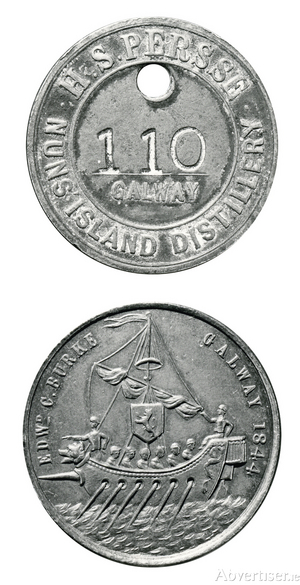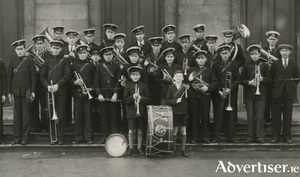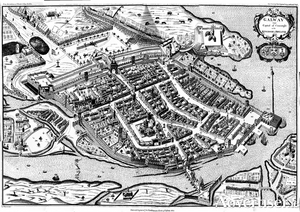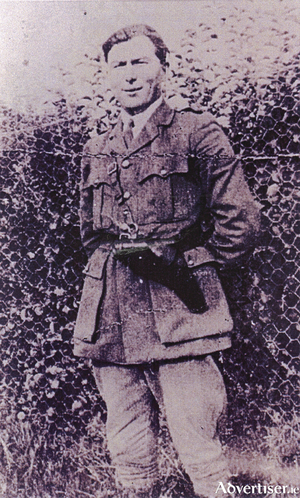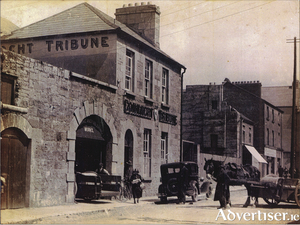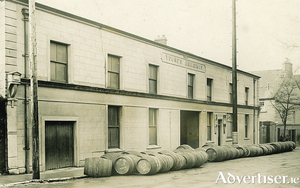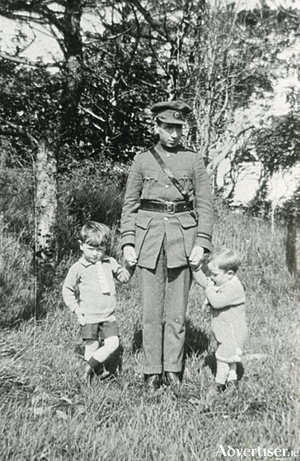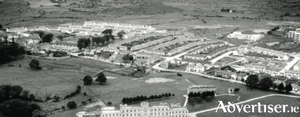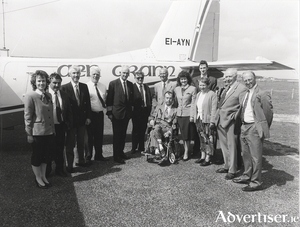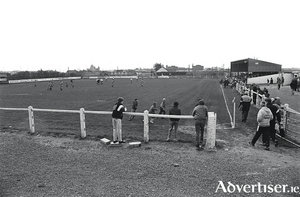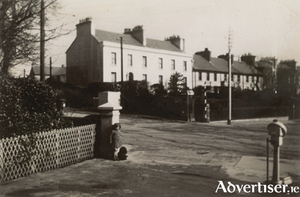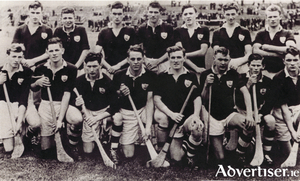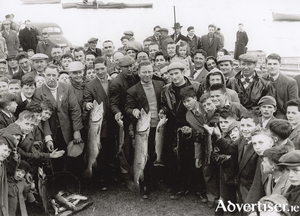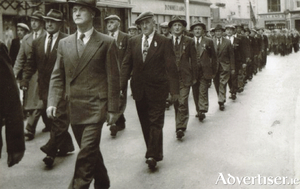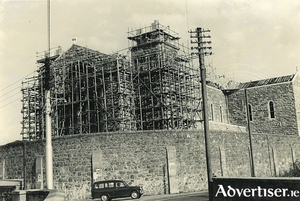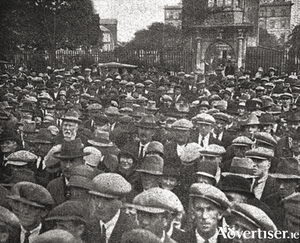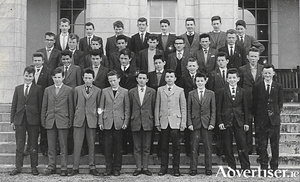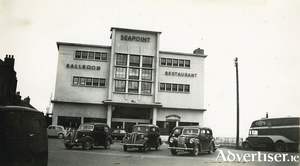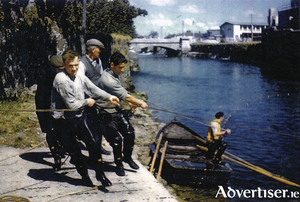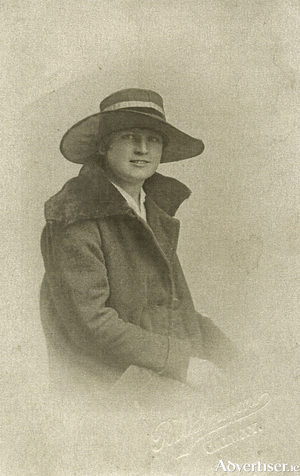Galway Distillery tickets
Thu, Nov 12, 2015
In the 1600s trade tokens were given out by the Crown and were used as a royal licence to do business. If you were a trades or business merchant, you had to obtain this token. Some had dates on them and some had not. In Galway city and county there were 43 merchants listed in the period 1653-1679. By 1680, many of these tokens were replaced by the halfpenny copper coin.
Read more ...St Patrick's Brass Band
Thu, Nov 05, 2015
If you think Saint Patrick’s Brass band seems to have been around forever, you are almost right. It was founded 119 years ago in 1896, in Forster Street by Peter Rabbitte, Michael Spelman, and Paddy Walsh. It was originally a fife and drum band known as St Patrick’s Fife and Drum Band Society.
Read more ...Lecture on the people who ran 17th century Galway
Thu, Nov 05, 2015
The men who controlled Galway city and its corporation in the 17th century, had wealth and power, but they had to tread carefully with English dominance and sectarianism breathing down their necks.
Read more ...Thomas ‘Baby’ Duggan
Thu, Oct 29, 2015
Thomas Duggan was popularly known as “Baby” because of the contrast to his considerable proportions. He was born in 1899. Although only a boy, he was one of the first to take up arms with Liam Mellows in the lead up to the Rising. When the Rising was quelled, he was arrested with many others and interned at Frongoch. He was kept there until Christmas, when he was released under a general amnesty.
Read more ...Local papers and their role in our history
Thu, Oct 22, 2015
In 1909 Galway was at a low ebb, the population was just over 3,000, the local economy was in poor shape, the canal and the docks were not being well used commercially, the student population of UCG was 131, there was very little manufacturing, and local politics was still bedevilled by the Parnell split. There were two local newspapers, The Connacht Champion which actively supported William Smith O’Brien MP and often virulently attacked the Irish Parliamentary Party, and The Galway Express which originally supported the conservative unionist viewpoint, but which gradually became more nationalist until its premises were wrecked in 1920 by the Black and Tans.
Read more ...Joe Young’s ‘Windy Waters’
Thu, Oct 15, 2015
James Hardiman, in his history of Galway, mentions a spring well that was reputedly 1,000 years old. He described it as “A Chalybeate spring of the same class as the celebrated Scarborough Waters, outside the East Gate was in great repute here. A spa house has been erected over it by a Mr. Eyre (who sailed with Columbus when America was discovered) and is much frequented.” Hardiman attributed to the tonic qualities of the water the numerous instances of longevity which he observed in the district.
Read more ...Mícheál Ó Droighneáin, 1916 veteran
Thu, Oct 08, 2015
Mícheál Ó Droighneáin was born in Spiddal. He left school when he was 14 and got a job in McCambridge’s for 6d a week. Lady Killanin convinced him to go back to school and he became a monitor, went on to training college in Dublin, and it was there he became a Nationalist. “I became a member of the IRB towards the end of 1910 when I was teaching in Dublin [from August 1910 to January 1913]. Then I came to my native place, teaching in Spiddal for one year and then coming to Furbo.”
Read more ...Shantalla in 1953
Fri, Oct 02, 2015
Walter Macken’s first published English language play Mungo’s Mansion was about people in the tenements of Buttermilk Lane about to be rehoused away out in the country, in the wilds of Shantalla. This was causing great distress to the ‘townies’ who would have to move less than a mile as the crow flies.
Read more ...Aer Árainn, the early years
Thu, Sep 24, 2015
There was a ferry service to the Aran Islands in the 1960s, but the ship could only dock at Inis Mór. In 1969 Colie Hernon wrote a letter to The Irish Times complaining of the inadequate transport facilities to the islands, which prompted Hayden Lawford to conduct an aerial survey of Inis Mór. Meanwhile Ralph Langan, whose business was fruit wholesaling in Galway, and who had problems shipping fresh fruit to the islands, had also seen Colie’s letter.
Read more ...Terryland Park
Thu, Sep 17, 2015
In ancient times, Galway was known as Streamstown because the lower Galway River divided into many streams, thus creating a system of islands. The area was known as ‘Tír Oileáin’, the land of islands. Two place names survive from that period, Tirellan and Terryland.
Read more ...The Crescent from Murray’s shop
Thu, Sep 10, 2015
This photograph of The Crescent, which was originally known as Palmyra Crescent, was taken c1940. Palmyra in Syria is very much in the news these days, but I cannot think of any reason why someone would name a road in Galway after it.
Read more ...The agony and the ecstasy of Galway hurling
Thu, Sep 03, 2015
An elderly lady once told me that “Apart from the Irish language, we have nothing more Irish in this country than the game of hurling.” I agree. It is the greatest game of them all. It is probably the number one game in the county, attendances at senior county finals being a very good criterion — the hurling final has always been the bigger attraction than the football counterpart, “even in the balmy days of our football three-in-a-row,” according to the late Jack Mahon.
Read more ...Bráithreacht na Coiribe
Thu, Aug 27, 2015
When a small group of anglers who regularly fished the lower lake were arranging a function for themselves in 1953, they decided to form an angling association as well. The objectives of the association were the promotion of good fellowship among anglers, the fostering of improved angling conditions, and the maintenance of free fishing. They called themselves the Brotherhood of the Corrib, or Bráithreacht na Coiribe.
Read more ...Peter Greene, volunteer and mayor of Galway
Thu, Aug 20, 2015
Peter Greene was born in Galway city in 1895, the youngest child of Colman Greene from Carna and Julia McGrath from Newcastle. He was educated in the ‘Pres’ and the ‘Mon’, where his teacher Brother Ambrose was a major influence; “Boys, I hope none of you will ever wear the red coat.”
Read more ...Galway Cathedral
Thu, Aug 13, 2015
“Catholic cathedrals in Ireland are monuments to our imitative instincts and conservative distrust of artistic originality. There are examples of new church architecture but in general, Church authorities remained faithful to the Middle Ages and refused to abandon medieval architecture. It is therefore understandable that in 1949 when the building of Galway Cathedral was commissioned, it should have been conceived in a hybrid Romanesque style. In 1959, the foundation stone was laid and on August 15, 1965, the Cathedral of Our Lady Assumed into Heaven and St Nicholas was dedicated by Cardinal Cushing. In December that year the Vatican Council solemnly ended its revolutionary document The Constitution on the Sacred Liturgy which rendered the shape, style, arrangement, and setting of such buildings obsolete and anachronistic. This building was almost an object lesson in insularity. It is clear from the late Bishop of Galway’s instructions that for him art can be no more than decoration, an illustration of scripture or a clearly formulated theology. Art is never an original source, a spiritual revelation, a doing of theology.”
Read more ...A 1927 election rally
Thu, Aug 06, 2015
Our photograph was taken on June 5, 1927 from the platform of a Cumann na nGaedheal election rally in Eyre Square. The crowd (almost entirely male), “looked voters every one”. In the background you can see the Browne Doorway and the Railway Hotel.
Read more ...Coláiste Éinde, founded 1928
Thu, Jul 23, 2015
Coláiste Éinde was one of the institutions founded by the State shortly after attaining freedom. It initially suffered from ‘growing pains’. It started on October 23 1928 in Furbo House, and later moved to Dublin before eventually finding its home in Threadneedle Road. The building was constructed by Stewarts to house St Louis nuns attending UCG and also for a girls’ organisation.
Read more ...Seapoint Ballroom
Thu, Jul 16, 2015
Sixty six years ago tomorrow, on July 17 1949, Seapoint Ballroom was officially opened by Joe Costelloe, Mayor of Galway, at 10pm.
Read more ...The Galway Fishery
Thu, Jul 09, 2015
The first documented reference to the Galway Fishery is found in the Pipe Rolls, a collection of financial records maintained by the British Treasury. The Rolls of 1283 AD refer to the fishery at the time being part of the property of Walter De Burgo. The fishery passed through several ownerships until 1521 when Henry VIII granted a licence to Janet and Anthony Lynch to have three nets upon the river of Galway between the bridge and the sea and to build one water mill upon the river wherever they thought proper. In 1570 Elizabeth I granted the mayor, bailiffs, and commonality of the town and their successors “The customs of one salmon every Wednesday out of the Great Weir, a salmon every Saturday out of the High Weir, a salmon every Friday out of the ‘hale’ (haul) net and as many eels as shall be taken in one day out of twenty eel weirs.”
Read more ...Peg Broderick-Nicholson and the War Of Independence
Thu, Jul 02, 2015
Peg was born at 17 Prospect Hill of parents with a strong nationalist outlook. She went to school in ‘The Pres’, where after the 1916 Rising there was a pitched battle between the wearers of the red, white, and blue badges (common during World War I) and those wearing green, white, and gold badges. The green side won, but then all the badges were confiscated by Mother Brendan.
Read more ...